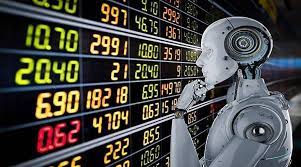In the dynamic world of forex trading, where every second counts and decisions are made swiftly, the role of technology has become increasingly prominent. Among the myriad of tools available to traders, one innovation stands out: the Forex Robot. These forex robot trading systems have revolutionized the way individuals participate in the foreign exchange market, offering efficiency, precision, and the potential for enhanced profitability. But what exactly are forex robots, and how do they work?
What are Forex Robots?
Forex robots, also known as expert advisors (EAs), are computer programs designed to analyze market data, make trading decisions, and execute trades automatically on behalf of traders. These algorithms are based on predefined sets of rules, indicators, and parameters, often programmed by experienced traders or developers. They aim to capitalize on market opportunities while minimizing human errors and emotional biases that can often derail trading strategies.
How Do Forex Robots Work?
Forex robots operate by continuously monitoring currency pairs and other relevant market indicators in real-time. They use sophisticated algorithms to interpret this data and identify potential trading opportunities based on predetermined criteria. These criteria can include technical indicators such as moving averages, RSI (Relative Strength Index), MACD (Moving Average Convergence Divergence), or fundamental factors like economic news releases and geopolitical events.
Once a trading signal is generated, the forex robot automatically executes the trade according to the specified parameters. This process typically involves sending orders directly to the broker’s trading platform, eliminating the need for manual intervention by the trader. Additionally, forex robots can manage multiple trades simultaneously across different currency pairs and timeframes, enabling traders to diversify their portfolios and spread risk effectively.
Advantages of Forex Robots
- Emotion-Free Trading: One of the most significant advantages of forex robots is their ability to eliminate emotional biases from trading decisions. Fear, greed, and hesitation, common pitfalls for human traders, are non-existent for automated systems, leading to more consistent and disciplined trading.
- Speed and Efficiency: Forex robots can analyze vast amounts of market data and execute trades in a fraction of a second, far faster than any human trader could. This rapid response to market movements allows for timely execution of trading strategies and capitalization on fleeting opportunities.
- 24/7 Market Monitoring: Unlike human traders who need rest, forex robots can operate 24 hours a day, five days a week, continuously monitoring the market for trading opportunities across different time zones. This round-the-clock vigilance ensures that no potentially profitable trades are missed.
- Backtesting and Optimization: Forex robots allow traders to backtest their strategies using historical market data, providing insights into the effectiveness of their approach before risking real capital. Additionally, these systems can be optimized and refined over time to adapt to changing market conditions and improve performance.
- Diversification: By automating multiple trading strategies or employing different forex robots, traders can diversify their trading portfolios effectively. This diversification helps spread risk and can enhance overall profitability.
Challenges and Considerations
While forex robots offer numerous advantages, it’s essential to consider some potential challenges and limitations:
- Market Volatility: Rapid changes in market conditions, particularly during periods of high volatility, can pose challenges for forex robots, leading to unexpected losses or missed opportunities.
- Over-Optimization: Excessive optimization of forex robots based on historical data can lead to curve-fitting, where the algorithm performs exceptionally well on past data but fails to generalize to new market conditions.
- Monitoring and Maintenance: Despite their autonomy, forex robots require regular monitoring and maintenance by traders to ensure they continue to perform optimally. This includes updating parameters, adjusting strategies, and addressing technical issues promptly.
- Lack of Adaptability: While some forex robots are designed to adapt to changing market conditions, others may struggle to adjust to unexpected events or shifts in market dynamics, potentially leading to suboptimal performance.
Conclusion
Forex robots represent a powerful tool for traders seeking to automate their trading strategies and capitalize on opportunities in the foreign exchange market. With their ability to execute trades swiftly, efficiently, and without emotional bias, these automated systems offer numerous advantages over traditional manual trading approaches. However, it’s essential for traders to understand the complexities and limitations of forex robots and to use them responsibly as part of a comprehensive trading strategy. When utilized effectively, forex robots can be valuable allies in the pursuit of trading success.
